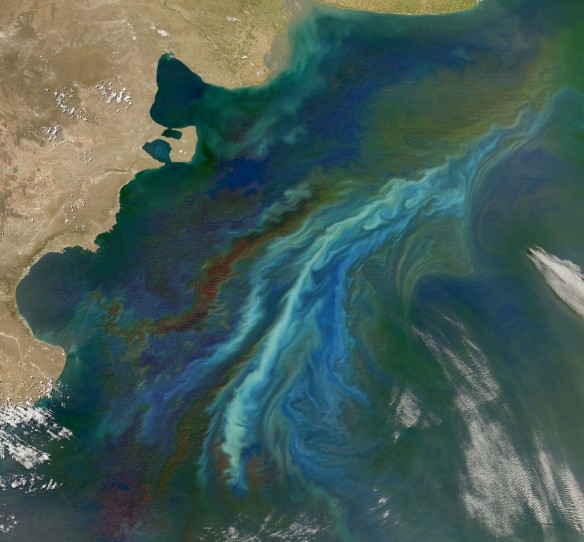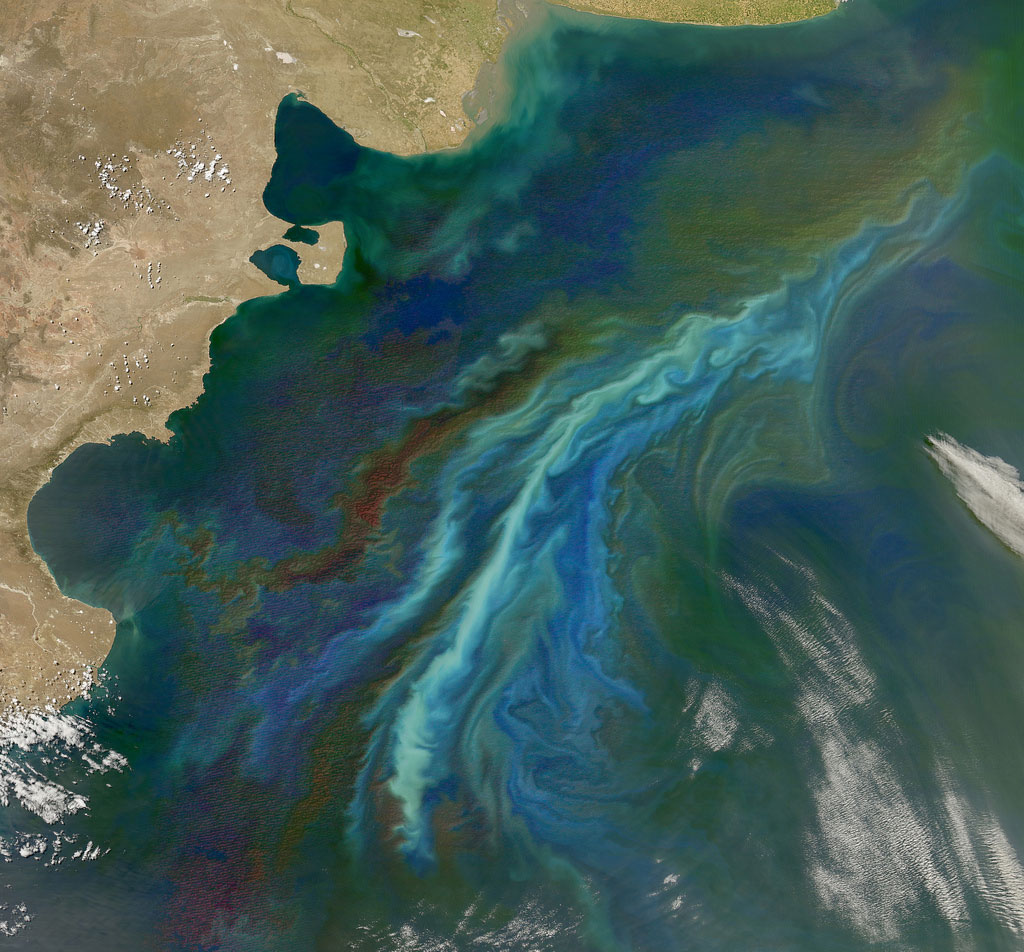
A massive phytoplankton bloom off of the Atlantic coast of Patagonia. Those plants become food for everything from microscopic animals (zooplankton) to fish to whales. Most of the phytoplankton blooming in this photo are likely coccolithophores, single-celled plants that form calcite scales. (Calcite is a carbonate mineral often found in limestone chalk.) Blooms of coccolithophores are common in those waters in southern hemisphere’s spring and summer. Diatoms might also be in the mix.coccolithophores. Captions and Image source: NASA / Michael Carlowicz & Norman Kuring
Excerpts;
Most of global warming’s heat is ending up in the oceans, making the waters less hospitable for many species. New research suggests that at least one type of marine phytoplankton may respond via evolutionary change…
Read Full Article, Climate Central
Sharks In Acidic Waters Avoid Smell Of Food, Science Daily (09-10-2014)









